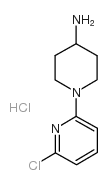Mode of action of gingerols and shogaols on 5-HT3 receptors: binding studies, cation uptake by the receptor channel and contraction of isolated guinea-pig ileum.
Heba Abdel-Aziz, Timo Windeck, Michael Ploch, Eugen J Verspohl
文献索引:Eur. J. Pharmacol. 530(1-2) , 136-43, (2006)
全文:HTML全文
摘要
Ginger (rhizomes of Zingiber officinale) has been shown to exert potent anti-emetic properties, but its mode of action has not yet been elucidated. Among its active constituents, [6]-, [8]- and [10]-gingerol as well as [6]-shogaol were shown in different in vivo studies to be at least partly responsible for the drug's anti-emetic properties. In an attempt to gain more insight into the mode of action of these compounds, three different in vitro models were used to investigate their effects on 5-HT(3) receptors (serotonin receptor subtype) in more detail: [(14)C]guanidinium influx into N1E-115 cells which express 5-HT(3) receptors, isotonic contractions of the isolated guinea-pig ileum and equilibrium competition binding studies using a radioactively labeled 5-HT(3) receptor antagonist ([(3)H]GR65630) (3-(5-methyl-1H-imidazol-4-yl)-1-(1-methyl-1H-indol-3-yl)-1-propanone). All four compounds inhibited the [(14)C]guanidinium influx through 5-HT(3) receptor channels as well as contractions of the guinea-pig ileum induced by SR57227A ((4-amino)-(6-chloro-2-pyridyl)l-piperidine hydrochloride), a highly selective 5-HT(3) receptor agonist. Both effects were concentration-dependent, with the following order of potency for both models: [6]-shogaol> or =[8]-gingerol>[10]-gingerol> or =[6]-gingerol. All compounds showed also weak anticholinergic and antineurokininergic activities in the guinea-pig ileum (acetylcholine and substance P are mediators of the 5-HT(3) receptor effect). The vanilloid receptor did not seem to be involved derived from experiments using capsazepine. None of the tested ginger substances, however, was able to displace [(3)H]GR65630 from its binding site (5-HT(3) receptor) neither on intact N1E-115 cells nor on the purified membranes of HEK-293 cells over-expressing the h5-HT(3) receptor. It may be concluded that [6]-, [8]-, [10]-gingerol and [6]-shogaol exert their anti-emetic effect at least partly by acting on the 5-HT(3) receptor ion-channel complex, probably by binding to a modulatory site distinct from the serotonin binding site. This may include indirect effects via receptors in the signal cascade behind the 5-HT(3) receptor channel complex such as substance P receptors and muscarinic receptors; this needs further investigation since ginger is effective against motion sickness which is cured by some vanilloids and by anticholinergics such as scopolamine.
相关化合物
| 结构式 | 名称/CAS号 | 分子式 | 全部文献 |
|---|---|---|---|
 |
4-氨基-1-(6-氯-2-吡啶基)哌啶盐酸盐
CAS:77145-61-0 |
C10H15Cl2N3 |
|
The pyramidal neurons in the medial prefrontal cortex show d...
2011-04-12 [Brain Res. 1384 , 69-79, (2011)] |
|
Discriminative stimulus effects of 5.6 mg/kg pregnanolone in...
2005-08-01 [Alcohol 37(1) , 35-45, (2005)] |
|
SR 57227A: a potent and selective agonist at central and per...
1993-06-24 [Eur. J. Pharmacol. 237 , 299, (1993)] |
|
Antidepressant-like effects of SR 57227A, a 5-HT3 receptor a...
[J. Neural Transm. Gen. Sect. 102(2) , 83-90, (1995)] |
|
Inhibition of NMDA-receptor mediated response in the rat med...
1998-07-01 [Synapse 29(3) , 257-68, (1998)] |